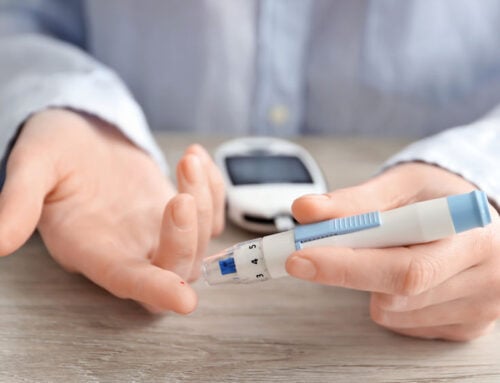Monitoring Blood Glucose Levels to Stay Healthy
When an individual is diagnosed with diabetes or hypoglycemia, physicians may often recommend routine blood glucose, also called blood sugar, testing to confirm insulin levels. By monitoring blood sugar, people can help to prevent potential medical complications associated with conditions like diabetes and hypoglycemia. Learn how to monitor blood sugar properly.

Testing blood sugar
Blood sugar monitoring usually must be done several times throughout the day, regardless of whether an individual has type 1 or type 2 diabetes, or even hypoglycemia. Testing frequency depends on a diabetic’s diagnosis, activity levels, and if the individual takes insulin. Also, becoming ill, changing medications, or starting a new routine may require more testing. Typically, physicians will recommend that people test during before meals, before and after exercising, and before bed.
Routine testing methods
The two most common ways to monitor blood glucose is by using testing strips or a continuous blood glucose monitor. With testing strips, individuals must use a blood glucose meter, testing strips, and a lancet to draw blood. In contrast, a continuous blood glucose meter is a sensor that is inserted under the skin that continuously compiles data on an individual’s blood sugar levels. A handheld device is held over the sensor to display the updated readings.
Testing urine for ketones
If diabetes isn’t well managed or an individual has been ill, physicians may request urine tests. The urine test will check for ketones and can be performed at home or in a doctor’s office. Sometimes physicians will request that an individual fast before the test to ensure a more accurate reading.
Managing A1C
In addition to routine testing throughout the day, people with diabetes should also get regular A1C tests. While daily testing provides a quick snapshot as the day progresses, an A1C test provides an overview of an individual’s blood glucose levels from within the last three months. Usually, A1C tests are performed at least two times a year.
Staying healthy to manage blood glucose
While having diabetes may require routine testing, daily diagnostics is just one way to manage the condition. People with diabetes should also focus on maintaining a healthy lifestyle, staying physically active, and eating a balanced diet to keep blood glucose within healthy ranges. People with diabetes should also know healthy glucose ranges to stay alert to potential changes. Likewise, people with diabetes should speak with a healthcare provider about any concerns or additional ways to manage the condition.




